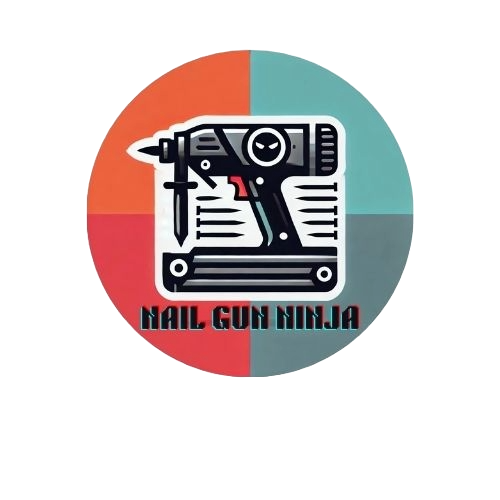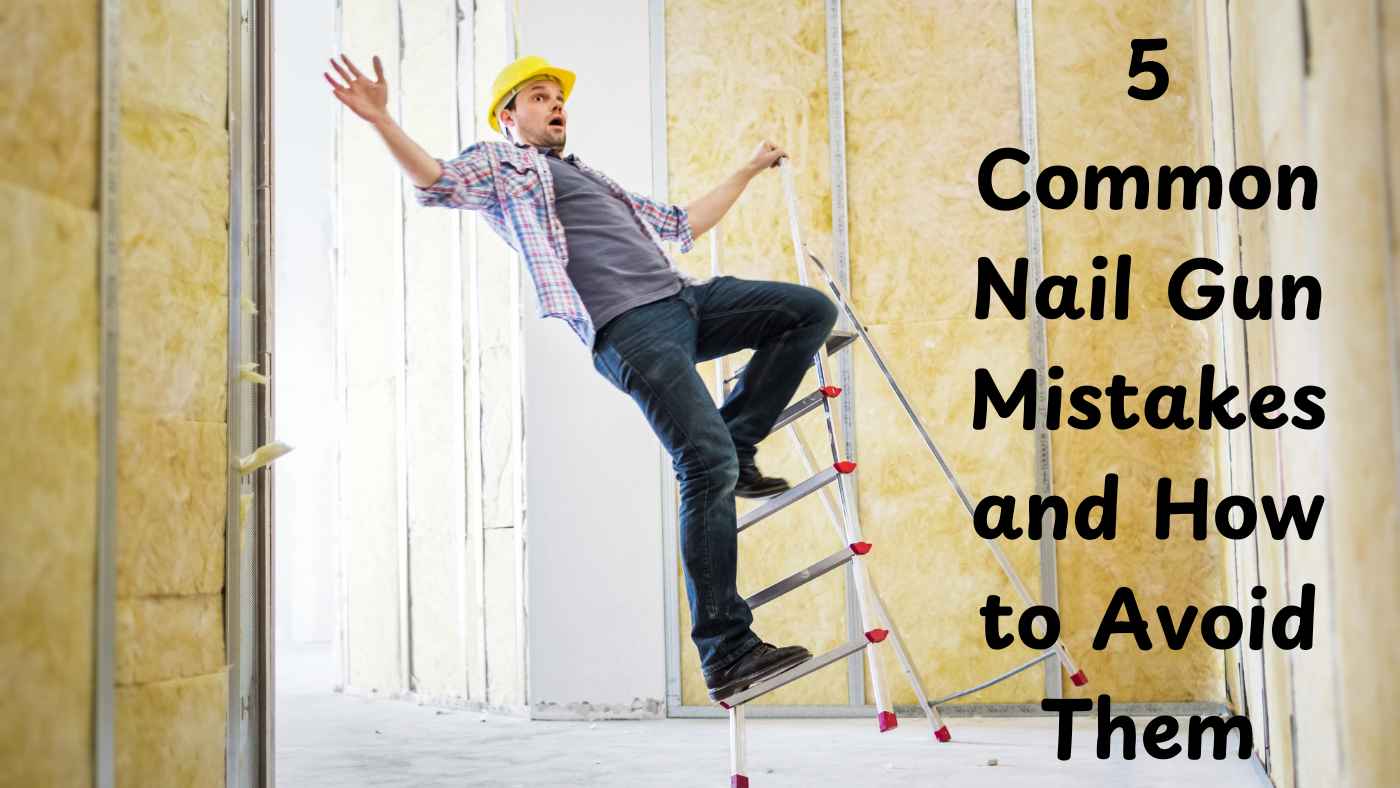A nail gun is a useful tool. It makes work faster and easier. Many people use it for building and repairs. But some mistakes happen often. Many people do not know the right way to use a nail gun.
They may forget to check the tool before using it. Some do not wear safety gear. Others do not clean or store the tool properly. These mistakes can cause problems.
It is important to learn the right way to use a nail gun. This helps prevent accidents. It also makes the tool last longer.
Mistake 1: Using the Wrong Nail Gun for the Job
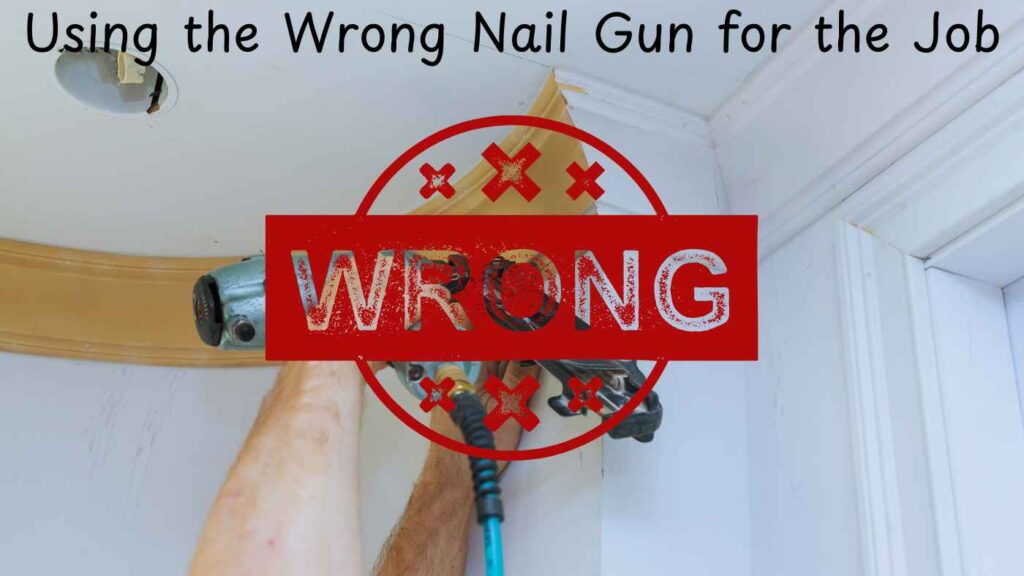
Framing vs. Finishing Nail Guns
Framing nail guns are for heavy tasks like framing walls. They use large nails for strong connections. Finishing nail guns are for light jobs like trim work.
They use smaller nails for delicate tasks. Always check the manufacturer’s instructions. Use the right tool for the job. This helps prevent damage to your material and tool.
Nail Gun Compatibility with Material Type
Each nail gun is made of specific materials. Roofing nail guns work best on shingles.
Finish nail guns are good for softwoods. Using the wrong tool can damage the material and waste time.
Always check the gun’s specifications. Make sure it matches the material you are working with. This ensures the best outcome for your project.
Misunderstanding Power Sources
Nail guns can be pneumatic, cordless, or electric. Pneumatic guns need an air compressor. They offer high power.
Cordless guns are mobile but may not be as powerful. Electric guns provide steady power but need an outlet. Choose the right power source. This helps the tool work efficiently for your project.
Choosing the Wrong Nail Size for the Task
The right nail size is important for your project. Long nails are for framing and strong connections. Short nails are for trim and lighter tasks.
Always check the recommended size for your work. This ensures strong connections without damaging the material or weakening the hold.
Selecting the Wrong Nail Gun for Precision Tasks
Framing guns are powerful but not precise enough for fine work. They can damage delicate materials. For precision tasks, use a finish or brad nail gun.
These tools are designed for smaller nails and finer work. They provide accurate results without damaging the material, giving your project a professional finish.
Failure to Consider Ergonomics
Heavy nail guns can strain your hand and wrist. This can lead to discomfort or injury during long use. Choose a gun that is lightweight and well-balanced.
Look for one with a comfortable grip. This reduces strain, especially for long periods, and helps you work more efficiently without fatigue.
Ignoring Nail Gun Weight and Size for Your Project
The impact of nail gun weight is very crucial when choosing the right nail gun for your project.
Large framing nail guns are heavy and hard to control. They are not suitable for smaller, delicate jobs. For small projects, use a lightweight finish nail gun.
It is easier to handle and allows for better control. This reduces fatigue and helps you work accurately without mistakes.
Choosing an Inappropriate Brand or Model
Not all nail guns are the same. Some brands offer poor quality and safety. Choose a reputable brand known for durability and reliability.
Look for features like depth control and jam clearing. This ensures the gun works well for your project and lasts longer, reducing the risk of malfunctions or safety issues.
Mistake 2: Incorrect Pressure Settings
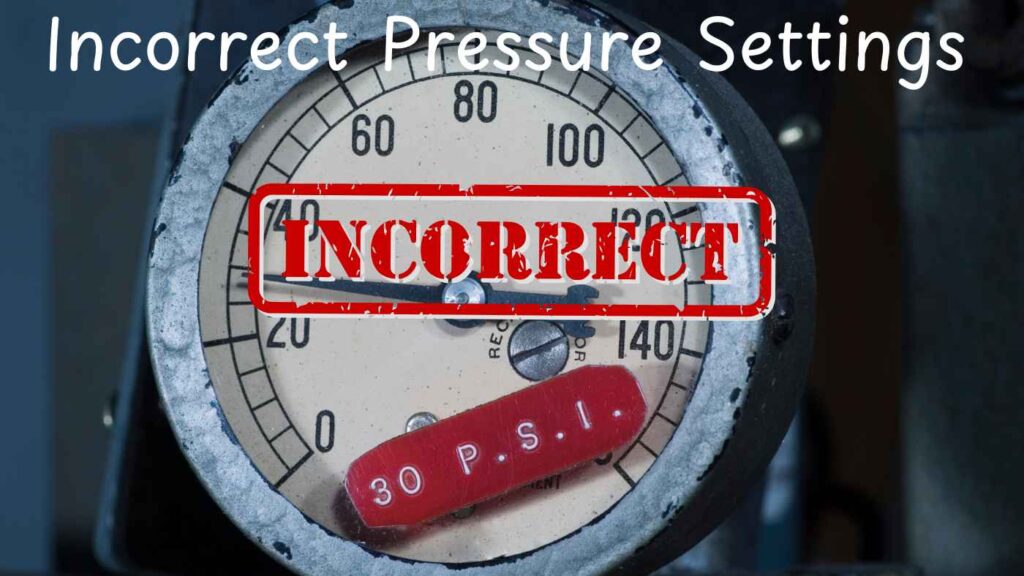
Using Too Low Air Pressure
Low air pressure can prevent nails from going deep enough into the material. This makes the hold weak.
Always set the air pressure to the manufacturer’s recommended PSI for your nail gun and project.
For tougher materials like hardwood, you might need to slightly increase the pressure to ensure the nails go in properly.
Using Too High Air Pressure
High air pressure can push nails too deep into the material. This can cause cosmetic damage like dimples or splits.
Adjust the air pressure based on the material you are using. Softer woods need lower pressure, while harder materials need higher pressure to avoid damaging the wood while securing the nails properly.
Inconsistent Nail Depth
If air pressure fluctuates, the nails might either stick out or sink too deep. This makes the finish uneven.
Always check the air pressure and adjust it regularly. Many nail guns have a depth control feature to help keep the nails consistent.
This ensures the nails are placed properly for a smooth, professional result.
Pressure Settings Not Adjusted for Nail Size
Larger nails require more air pressure to drive them into the material. Smaller nails need less pressure.
To avoid issues, adjust the air pressure based on the nail size.
Long nails require higher PSI to go in deep enough, while short nails need lower PSI to avoid over-penetrating and damaging the material.
Using the Same Pressure for All Materials
Different materials need different air pressures. Softwoods need less air pressure than hardwoods. Composite boards need a different PSI too.
Always adjust the air pressure based on the material. This helps the nails penetrate properly without damaging the surface, ensuring a secure hold without any cosmetic damage.
Forgetting to Check Pressure Before Use
Nail guns can lose air pressure over time. Starting a project without checking the pressure can cause mistakes.
Always check the air pressure before you begin. This simple step will save time, prevent errors, and ensure that the nails are driven accurately into the material.
Mistake 3: Not Keeping the Tool Properly Maintained
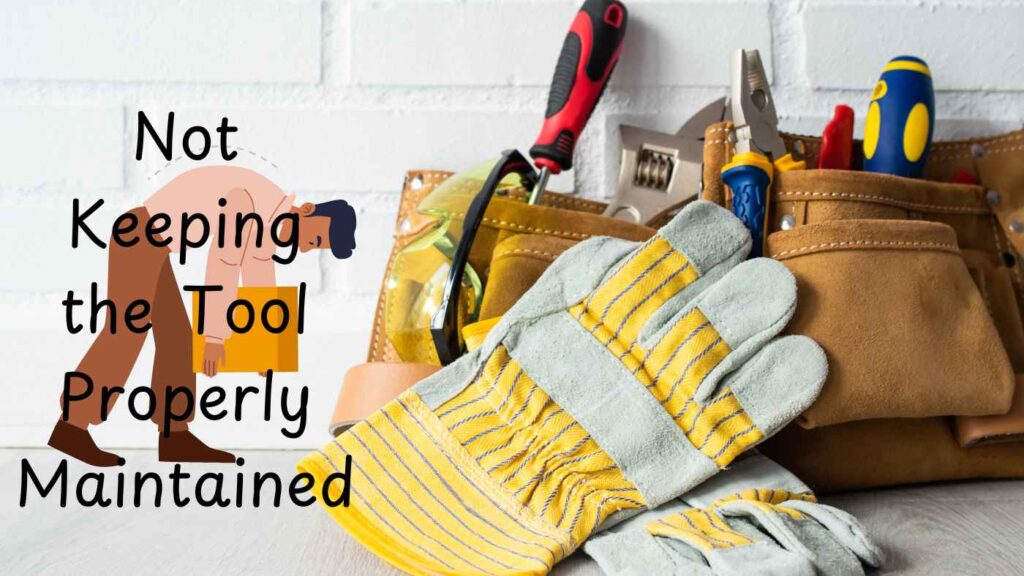
Failing to Lubricate the Nail Gun
Nail guns have moving parts that need oil to work well. Without oil, parts can stop moving and break. This can cause jams or misfires.
Always use the right oil and follow the manual. Apply the oil to the correct parts. This will help the tool work smoothly and last longer.
Ignoring Regular Cleaning of the Nail Gun
Dirt and dust can get inside the nail gun. This can cause jams and poor performance. Clean the nail gun often, especially after heavy use.
Use a brush to remove dirt. Wipe it with a cloth. Some parts might need extra cleaning. Keeping it clean helps it work properly.
Not Clearing Nail Jams Immediately
Nail jams can damage the tool if not fixed quickly. A jammed nail gun may misfire or break. Always clear jams as soon as they happen.
Follow the steps in the manual. Unplug the tool before fixing a jam. This keeps the nail gun in good condition and prevents accidents.
Failing to Inspect the Nail Gun for Damage
Nail guns can get damaged with use. Cracks, broken parts, or loose pieces can cause problems. Always check the nail gun before using it.
Look for signs of damage. If you see any broken parts, replace them. Fixing issues early helps keep the tool safe and working well.
Not Replacing Worn-out Parts
Parts like seals and triggers can wear out over time. Old parts make the nail gun work poorly. This can lead to jams or misfires.
Always replace worn-out parts when needed. Keep spare parts ready. Check the manual to use the correct parts. This keeps the tool working properly.
Using the Nail Gun Without Proper Calibration
If the nail gun is not adjusted right, nails may go too deep or not deep enough. This can weaken the hold or damage the material.
Always adjust the depth settings before using the nail gun. Match the settings to the material. This ensures the nails go in at the correct depth.
Not Following the Manufacturer’s Maintenance Guidelines
Each nail gun has a manual with care instructions. Ignoring these can lead to damage. Always follow the manufacturer’s guide.
It tells you when to clean, oil, and replace parts. This keeps the nail gun safe and working well for a long time. Proper care prevents problems.
Mistake 4: Failing to Follow Safety Protocols
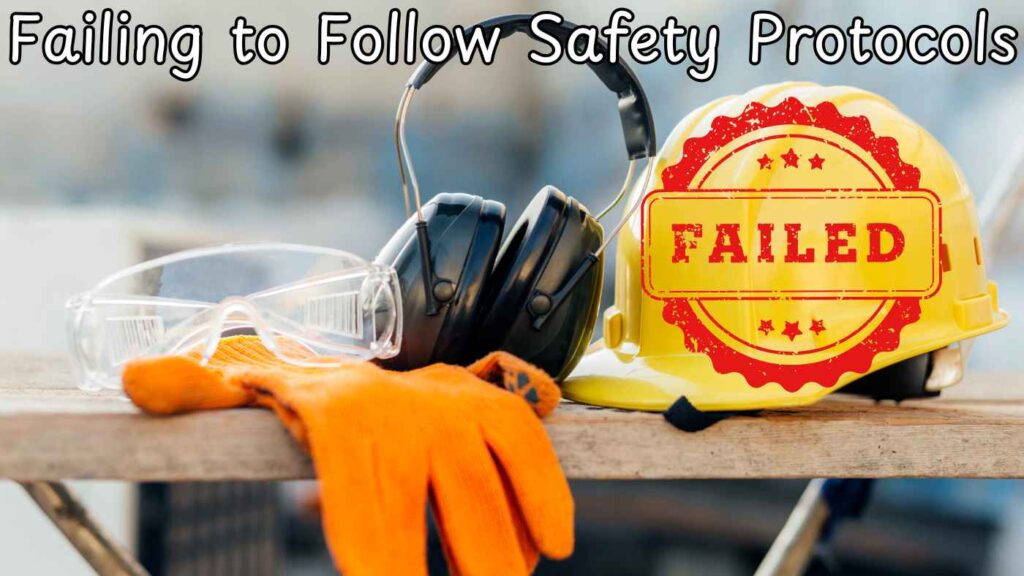
Not Wearing Safety Gear
Nail guns can cause injuries. Always wear safety goggles, ear protection, and gloves. Goggles protect your eyes from dust.
Ear protection reduces noise damage. Gloves help you hold the tool better and protect your hands. Wearing safety gear keeps you safe from accidents. Never use a nail gun without proper protection.
Failing to Engage the Safety Mechanism
Nail guns have a safety feature to prevent accidental firing. Always activate this feature before use. Never turn it off or remove it.
This feature stops nails from firing by accident. It helps prevent injuries. If the safety mechanism is not working, do not use the tool. Always check before using.
Pointing the Nail Gun at Yourself or Others
Never point the nail gun at yourself or anyone else. Accidents can happen if the tool misfires. Always keep the nail gun aimed at the ground or the work surface.
Be aware of the people around you. Misfiring can cause serious injury. Always hold the tool in a safe direction.
Not Keeping Hands and Body Clear of the Muzzle
Keep your hands and body away from the front of the nail gun. If the gun misfires, you can get hurt. Always place your hands in a safe position.
Hold the tool firmly. Stand in a stable position. Never put your hands or fingers near the muzzle while working.
Using the Nail Gun on an Unstable Surface
A shaky surface can make the nail gun hard to control. This can cause accidents. Always work on a steady and secure surface.
Use clamps if needed. Do not use a nail gun while standing on an unsafe ladder or scaffolding. A stable surface helps you use the tool safely.
Firing Too Close to Your Body or the Work Surface
If the nail gun is too close, it can misfire or cause nails to bounce back. Keep a safe distance from the material.
Follow the manufacturer’s distance instructions. Holding the tool too close can cause injury. Always make sure there is enough space between you and the work surface.
Mistake 5: Not Practicing Proper Hand Placement
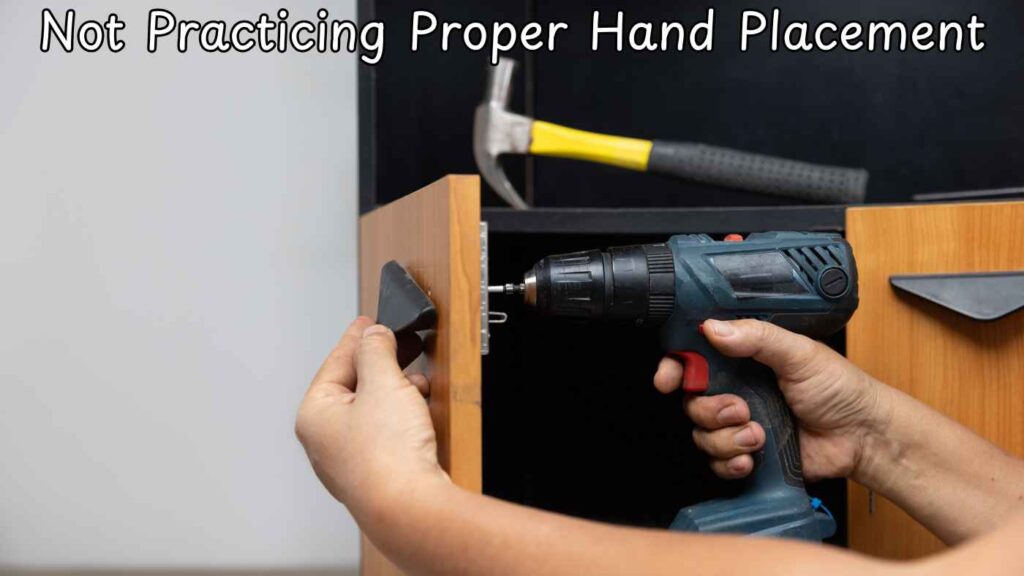
Holding the Nail Gun Too Tightly
Gripping the tool too hard can make your hand tired. This can reduce control. A tight grip can cause misfires and mistakes.
Hold the nail gun firmly but not too hard. A relaxed grip helps control the tool better. It also makes work easier and reduces hand pain.
Placing Your Hand in Front of the Muzzle
Never put your hand in front of the muzzle. The nail comes out from there. If a nail fires by accident, it can cause injury.
Always keep your hands away from the front. Make sure your fingers are in a safe place. Never block the firing area.
Using One Hand for Stability
Holding the nail gun with one hand can make it unstable. This can cause misfires and mistakes. Always use both hands.
Keep one hand on the handle for control. Place the other on the body of the tool for support. This helps with balance and accuracy.
Improper Angle of the Nail Gun
Holding the nail gun at the wrong angle can cause problems. Nails may not go deep enough. They may go in the wrong way.
Always hold the nail gun at the correct angle. Keep it straight against the surface. This helps with proper nail placement and strength.
Not Supporting the Work Material Properly
If the material is not stable, the nail gun may slip. This can cause nails to go in the wrong place. Always hold the material with your free hand.
Keep it steady while nailing. This makes sure the tool and the material are in the right position.
Not Using the Tool’s Grip Features
Some nail guns have padded grips or special handles. These help with control and comfort. If you do not use them, your hand may get tired.
Always use the tool’s grip features. This makes the tool easier to hold. It also helps prevent slipping and mistakes.
Firing While Holding the Nail Gun Improperly
If you hold the nail gun the wrong way, it can move suddenly. This can cause nails to fire in the wrong direction.
Always hold the tool with both hands. Stand in a steady position. Make sure the nail gun is secure before firing. This helps with safety and accuracy.
Conclusion
A nail gun is a powerful tool. It helps in many building and repair jobs. But using it the wrong way can cause problems. It can lead to damage or injury.
It is important to use a nail gun the right way. Always check the tool before use. Wear safety gear to protect yourself.
Adjust the pressure to match the material. Clean the nail gun after use. Store it in a safe place. These simple steps help prevent accidents. They also make the tool last longer.
By avoiding these mistakes, you can work safely. You can also do a better job. A nail gun is very useful when used correctly. It saves time and effort. Follow the proper steps, and you will get the best results.
FAQs
What are the most common nail gun mistakes?
Ans: The most common mistakes are using the wrong air pressure, not taking care of the tool, not following safety rules, holding the tool the wrong way, and using the wrong nails.
How do I keep my nail gun safe when not in use?
Ans: Keep the nail gun in a dry, cool place. Let out air if it uses air power. Remove the battery if it is battery-powered.
